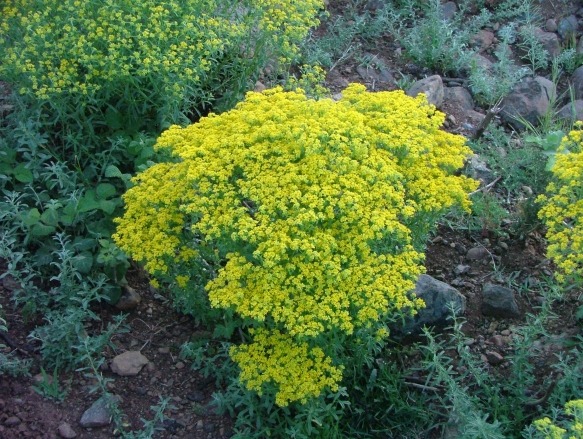By: Prof. Nand Lal, Dean, Faculty of Life Sciences, Former Pro-Vice Chancellor, C.S.J.M. University, Kanpur
Industry needs to be encouraged to adopt new technologies that have the potential to improve mine site rehabilitation outcomes and opportunities, especially in developing countries.Phytomining has several unique features like (1) It offers the possibility of exploiting ores or mineralised soils that are uneconomic by conventional mining methods. (2) ‘Bio-ores’ are virtually sulphur-free, and their smelting requires less energy than sulphidic ores. (3) The metal content of a bio-ore is usually much greater than that of a conventional ore and therefore requires less storage space despite the lower density of a bio-ore.(4) Phytomining is a ‘green’ technology that should appeal to the conservation movement as an alternative to opencast mining of low-grade ores. (5) It is a less expensive and environmental-friendly method for recovery of dispersed metals from soils and waters, characterized by simplicity of implementation.
Currently, phytomining has limited potential applications however the economic viability of phytomining improves as the price of metals increases. With China’s booming economy, metal prices are set to increase further.
The financial attractiveness of phytomining should increase, particularly if it can be combined with other technologies such as phytoremediation and biofuel production.Phytomining technology had been scientifically proven over the past 20 years, but the mining industry had not adopted it at a significant scale. This may be the result of a lack of minerals industry awareness of the technology’s potential or of the scientific advances that have been made in metal recovery from plants.
Industry needs to be encouraged to adopt new technologies that have the potential to improve mine site rehabilitation outcomes and opportunities, especially in developing countries.India does not have substantial nickel reserve. Whatever is there, is confined to Ni bearing lateritic and serpentinised soils of Sukinda valley in Jajpur District of Orissa.
The reserve of Ni Ore in three sectors in this valley namely Kaliapani, Kamarda-Sukerangi-Saruabil and TISCO are estimated to about 88.60 million tones (Gr. 1.20% with 0.9% cut off); 120.01 MT (Gr. 1.03% with 0.7% cut off); and 203.02 MT (Gr. 0.89% with 0.5% cut off).In the easternmost Kansa sector the reserve is 20.84 MT (Gr. 1.00% with 0.9% cut off), 30.07 MT (Gr. 0.9% with 0.7% cut off), and 40.88 MT (Gr. 0.8% with 0.5% cut off).In the entire Sukinda valley, the nickeliferous overburden (0.6 to 1.2% Ni) produced annually is of the order of 6 million cubic meters or approx. 9 million tones.
The soft to medium hard brown coloured lateritic overburden (occurring between 5 to 10 m) contains low grade Ni ore (<0.5%), whereas the underlying soft, light and porous ocherous material essentially composed of goethite and hematite has Ni content between 0.6 to 1.2%. Since the low grade ore (<0.8% Ni) occur in substantial amount and a proper extraction methodology is not available for this overburden, they are not being taken away from the dump.
The low-grade overburden is dumped because the process of extraction of metal is not cost-effective and many organizations involved in mining activities wait till price rise of that metal/ore. This causes environmental concern as toxic metals are added to the ground water, contaminating it, thereby posing health hazard.
Phytomining could remove low-grade overburden, solve the problem of environmental contamination, as well as bring profit to the organization. There is every possibility of nickel extraction by phytomining operations using proper hyperaccumulator plants in Sukinda area.




